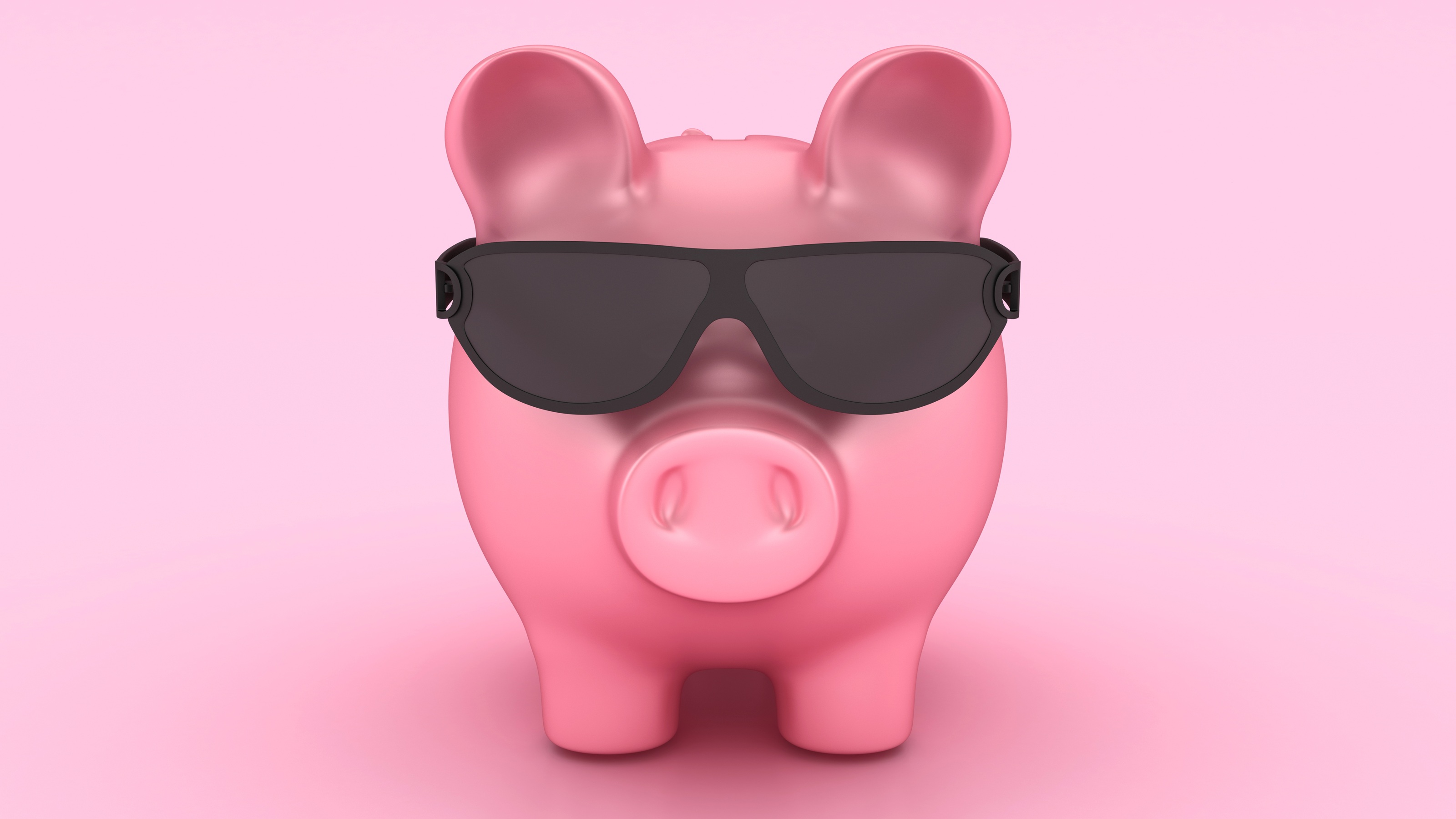Why I Tell My Clients to Use Mint When Planning for Retirement
Take it from a financial professional, Mint is a free, easy-to-use tool that can help you reach your financial goals.


When working with clients planning for their retirement, one thing we almost invariably ask about at the start of our relationship is their spending patterns. Some couples already have a strong handle on understanding this, while others may have begun working with us to get help with this exact item. While there are many ways to dive into spending, we like to start with a method that is both accurate and relatively easy for our clients to work with.
For clients who have never done budgeting before and hate spreadsheets, we will typically recommend they look at Mint as their first option to wrestle all this information together. There are many budgeting apps available, but Mint still seems to be one of the easier ones to use with a fairly robust account aggregation.
For readers who aren’t familiar with it, Mint is a free personal financial management website and mobile app from Intuit, the company behind Quicken and TurboTax. The app is available on your computer and mobile devices and is designed to help each user track their budget by downloading transactions from their bank, credit card and investment accounts. Depending on each person’s priority, it helps create a budget, a savings plan or to pay down debt.
From just $107.88 $24.99 for Kiplinger Personal Finance
Become a smarter, better informed investor. Subscribe from just $107.88 $24.99, plus get up to 4 Special Issues

Sign up for Kiplinger’s Free Newsletters
Profit and prosper with the best of expert advice on investing, taxes, retirement, personal finance and more - straight to your e-mail.
Profit and prosper with the best of expert advice - straight to your e-mail.
Categorizing spending to help you budget
With the correct setup and effort, Mint can be very powerful. I work with one family who uses it to create their annual budget – and uses that to create their annual projected spending for the next calendar year. As with any software application, I always like to set the expectation up front that it requires some effort over time to get things right.
Mint will broadly categorize most transactions correctly when linking to your bank and credit card accounts, but from time to time will need to be corrected. For example, I have a recurring bill from Centura Health that Mint thought was from “Century Theaters” and categorized as “Amusement” rather than medical expenses. But, with a few quick updates, Mint was able to adjust this category so that it always tags that payee to the “Doctor” category in the future. Once you make a customization like this, the trends and budgets are quickly adjusted.
By doing a quick check of your transactions every few weeks, you can arrive at an accurate snapshot of your spending.
Understanding your essential vs. desired spending in retirement
Over the past year, my advisory team has gone through the process of looking at spending with many of our clients, especially during COVID. This has been a good opportunity to re-assess how much of their spending is essential versus desired. Having this kind of information laid out is critical in building a detailed retirement plan.
It can be extremely useful to delineate what you truly need in retirement for your core needs, versus what you have more discretionary control over. In turn, this can help you understand what type of cushion you’ll have in retirement – against unexpected events you may encounter, such as lower-return environments, bear markets or unpredictable events like COVID.
Knowing where your paycheck is going
With little effort at all, it’s also possible to view your spending by category or by merchant in Mint. I recently did this myself and was astounded to find out my family spent over $9,000 last year at Amazon! Admittedly, we were preparing for the arrival of our second daughter and were stocking up on lots of items, but nevertheless it took me a little bit by surprise.
Having these kinds of numbers in front of you can really help you understand where your paycheck goes. In my case, the last few years have included a lot of spending on health care. I don’t expect that to continue long term, but knowing how it all adds up has helped us understand the need to reduce spending in other areas to make sure we don’t run into any problems.
For these reasons, I continue to recommend Mint for clients, especially for younger families who are looking to build a long-term savings plan. It’s never too late to get started, and you just might learn a few interesting things along the way that will help you improve your financial picture.
Profit and prosper with the best of Kiplinger's advice on investing, taxes, retirement, personal finance and much more. Delivered daily. Enter your email in the box and click Sign Me Up.

Shane W. Cummings is based in Halbert Hargrove’s Denver office and holds multiple roles with Halbert Hargrove. As Director of Technology/Cybersecurity, Shane’s overriding objective is to enable Halbert Hargrove associates to work efficiently and effectively, while safeguarding client data. As wealth adviser, he works with clients in helping them determine goals and identify financial risks, creating an allocation strategy for their investments.
-
 The Santa Claus Rally Officially Begins: Stock Market Today
The Santa Claus Rally Officially Begins: Stock Market TodayThe Santa Claus Rally is officially on as of Wednesday's closing bell, and initial returns are positive.
-
 How to Leave Different Amounts to Adult Children Without Causing a Rift
How to Leave Different Amounts to Adult Children Without Causing a RiftHere’s how to leave different amounts to adult children without causing a family rift.
-
 My Retirement Learning Curve, 1 Year In
My Retirement Learning Curve, 1 Year InA retiree checks in with what they wish they knew early on and what they've changed about their plan one year in.
-
 Introducing Your CD's Edgier Cousin: The Market-Linked CD
Introducing Your CD's Edgier Cousin: The Market-Linked CDTraditional CDs are a safe option for savers, but they don't always beat inflation. Should you try their counterparts, market-linked CDs, for better returns?
-
 How to Protect Yourself and Others From a Troubled Adult Child: A Lesson from Real Life
How to Protect Yourself and Others From a Troubled Adult Child: A Lesson from Real LifeThis case of a violent adult son whose parents are in denial is an example of the extreme risks some parents face if they neglect essential safety precautions.
-
 To Build Client Relationships That Last, Embrace Simplicity
To Build Client Relationships That Last, Embrace SimplicityAs more automation becomes the norm, you can distinguish yourself as a financial professional by using technology wisely and prioritizing personal touches.
-
 Client Demand Is Forcing Financial Advisers to Specialize: How to Deliver
Client Demand Is Forcing Financial Advisers to Specialize: How to DeliverThe complexity of wealthy clients' needs — combined with AI and consumer demand — suggests the future of financial planning belongs to specialized experts.
-
 A Financial Planner Takes a Deep Dive Into How Charitable Trusts Benefit You and Your Favorite Charities
A Financial Planner Takes a Deep Dive Into How Charitable Trusts Benefit You and Your Favorite CharitiesThese dual-purpose tools let affluent families combine philanthropic goals with advanced tax planning to generate income, reduce estate taxes and preserve wealth.
-
 A 5-Step Plan for Parents of Children With Special Needs, From a Financial Planner
A 5-Step Plan for Parents of Children With Special Needs, From a Financial PlannerGuidance to help ensure your child's needs are supported now and in the future – while protecting your own financial well-being.
-
 How Financial Advisers Can Best Help Widowed and Divorced Women
How Financial Advisers Can Best Help Widowed and Divorced WomenApproaching conversations with empathy and compassion is key to helping them find clarity and confidence and take control of their financial futures.
-
 A Wealth Adviser Explains: 4 Times I'd Give the Green Light for a Roth Conversion (and 4 Times I'd Say It's a No-Go)
A Wealth Adviser Explains: 4 Times I'd Give the Green Light for a Roth Conversion (and 4 Times I'd Say It's a No-Go)Roth conversions should never be done on a whim — they're a product of careful timing and long-term tax considerations. So how can you tell whether to go ahead?